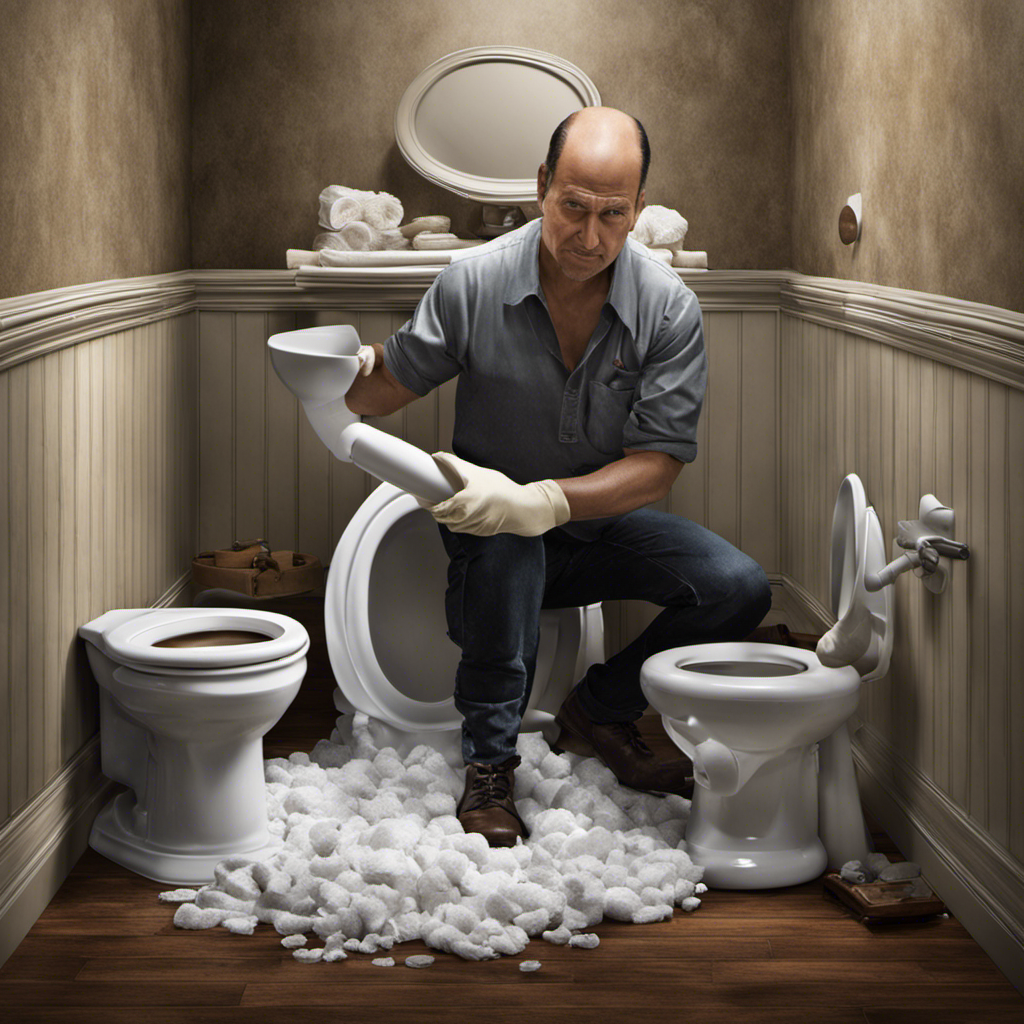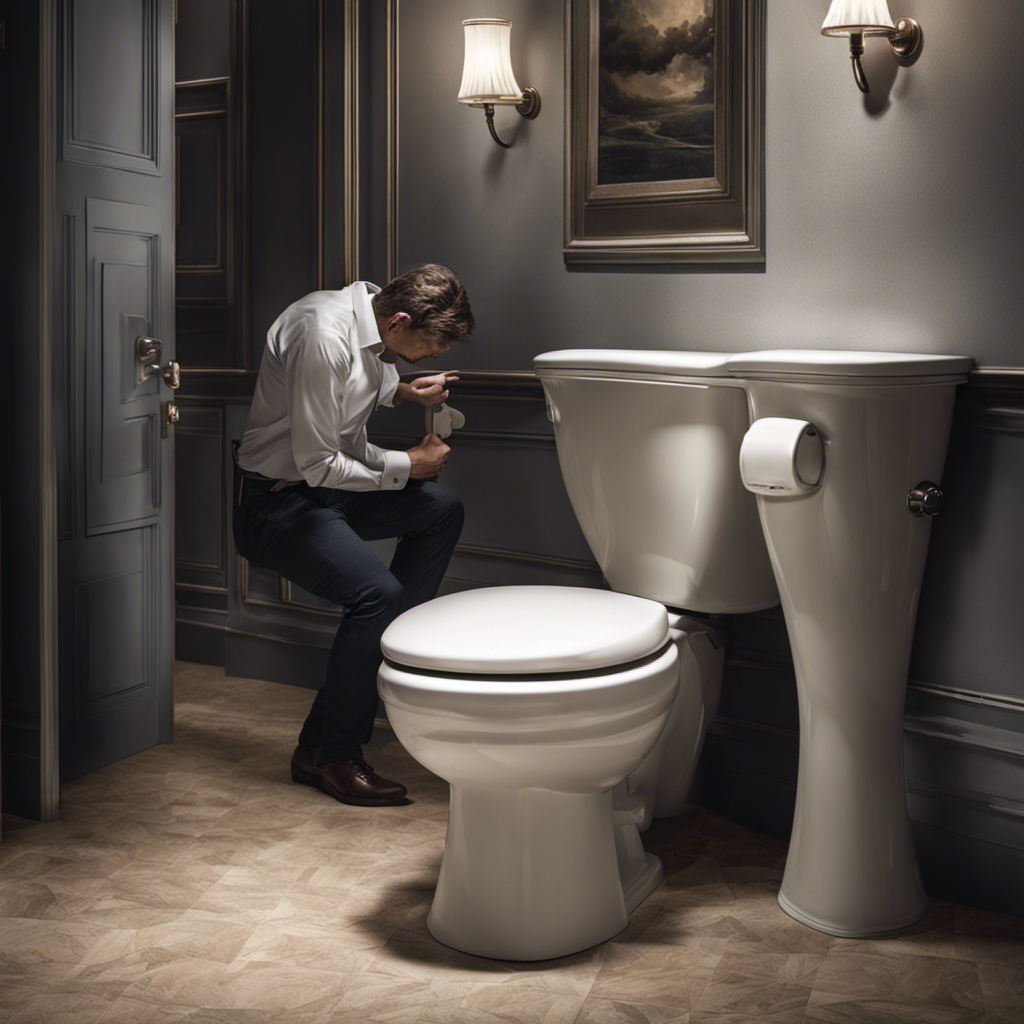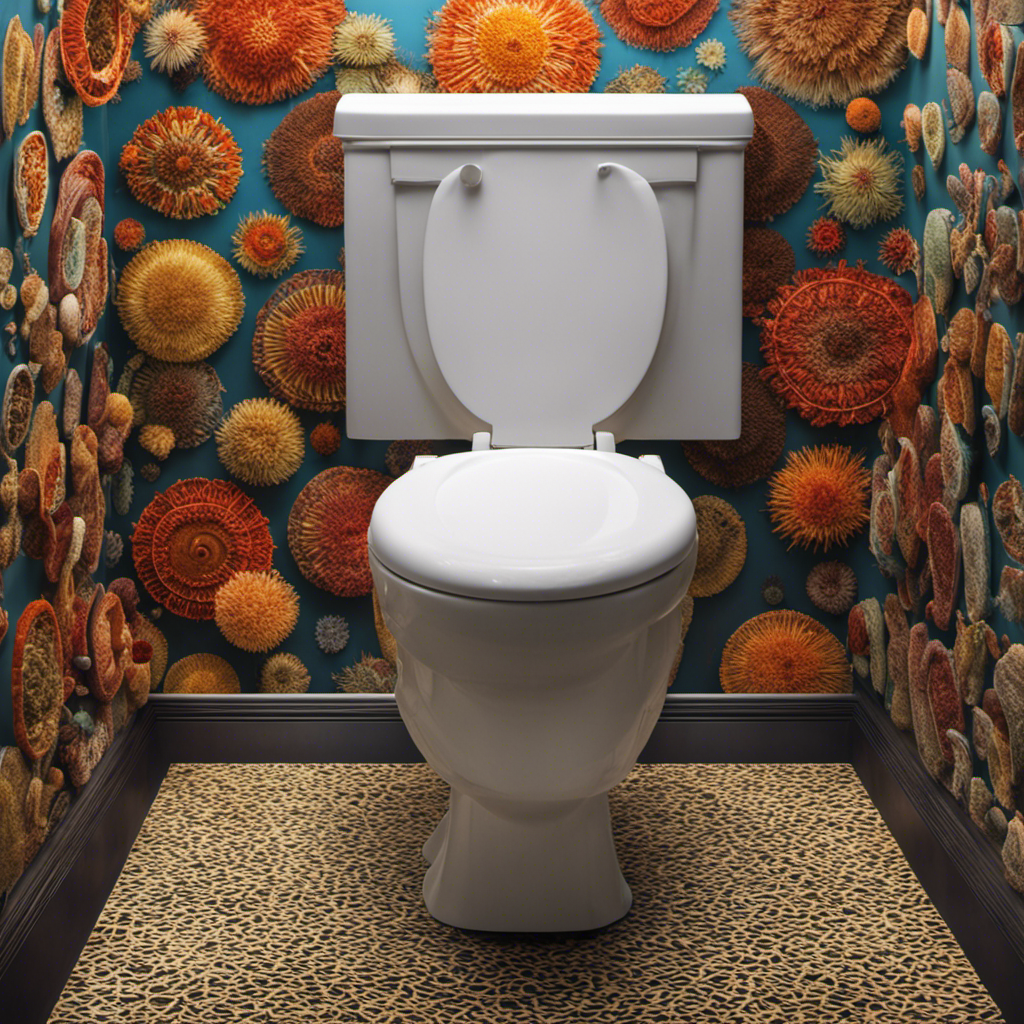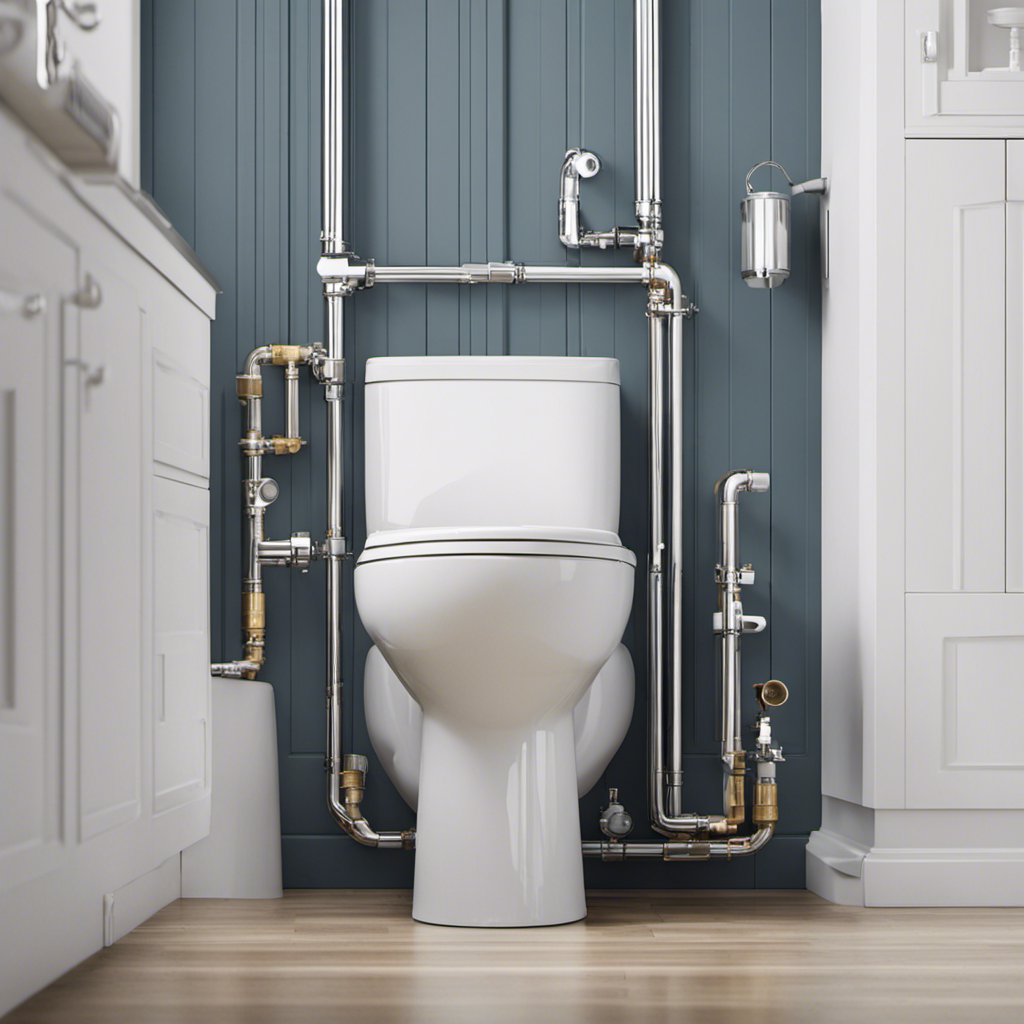I’ve been there – standing in front of a clogged toilet, desperately searching for a solution. But fear not, because I’ve got you covered.
In this step-by-step guide, I’ll show you how to effectively unclog a toilet using simple tools and materials you probably already have. From the common causes of toilet clogs to alternative methods without a plunger, I’ll walk you through every detail to ensure your toilet troubles are a thing of the past.
So let’s dive in and get your toilet back in working order!
Key Takeaways
- Water rising to the rim when flushing indicates a blockage in the drain pipe.
- Slow drainage can be caused by a partial clog.
- Using a plunger or a toilet auger can effectively unclog a toilet.
- To prevent future toilet clogs, avoid flushing non-flushable items and regularly clean the toilet.
Understanding the Common Causes of Toilet Clogs
You should understand the common causes of toilet clogs so you can prevent them in the future. Not only are toilet clogs inconvenient, but they can also lead to potential damages if not addressed promptly.
One of the common signs of a clogged toilet is water rising to the rim when you flush. This indicates that there is a blockage in the drain pipe.
Another common sign is slow drainage, where the water takes longer than usual to go down the toilet bowl. This can be caused by a partial clog.
It is important to address these issues promptly to prevent potential damages, such as overflowing toilets, water damage, and plumbing issues.
Essential Tools and Materials for Unclogging a Toilet
To effectively tackle the task at hand, it’s important to gather the essential tools and materials needed for unclogging a toilet. Two key items that can help in this situation are a toilet auger and a chemical drain cleaner.
-
Toilet Auger: This tool, also known as a plumber’s snake, is designed to reach deep into the toilet drain and break up any clogs. It consists of a long, flexible cable with a coiled end that can be inserted into the drain. By turning the handle, you can navigate the auger through the pipes, either pushing the clog out or breaking it up for easier removal.
-
Chemical Drain Cleaner: Another option is to use a chemical drain cleaner. These cleaners are specifically formulated to dissolve organic material, such as toilet paper and waste, that may be causing the clog. Follow the instructions on the product carefully and ensure proper ventilation when using chemical drain cleaners.
Step-By-Step Instructions for Using a Plunger Effectively
First, make sure you have a plunger with a flange, as this will provide a better seal and increase the effectiveness of your plunging efforts.
To unclog a toilet using a plunger, follow these step-by-step instructions.
Start by positioning the plunger over the drain hole, making sure it covers the entire opening.
Next, push down firmly on the plunger to create a seal.
Then, using quick and forceful plunging motions, move the plunger up and down for about 10 to 15 seconds.
Repeat this process several times, gradually increasing the intensity of your plunging.
If the clog doesn’t clear after a few attempts, you can try adding some hot water to the bowl and repeating the plunging process.
Remember, patience and persistence are key when using plunger techniques.
If all else fails, it may be time to call a professional plumber for further troubleshooting.
Alternative Methods for Unclogging a Toilet Without a Plunger
If you don’t have a plunger, there are alternative methods to clear a clogged toilet. Here are two options you can try:
-
Toilet snake method:
-
Get a toilet snake, also known as a drain auger.
-
Insert the snake into the toilet drain and push it gently.
-
Rotate the snake as you push to break up the clog.
-
Continue pushing and rotating until you feel the snake move freely.
-
Flush the toilet to see if the clog is cleared. If not, repeat the process.
-
Hot water method:
-
Boil a large pot of water.
-
Carefully pour the hot water into the toilet bowl.
-
Let the water sit for a few minutes to soften the clog.
-
Flush the toilet to see if the clog is cleared. If not, try again or use another method.
Preventive Measures to Avoid Future Toilet Clogs
One way to prevent future clogs is by being mindful of what you flush down the drain. Proper toilet maintenance and following some preventive measures can help avoid unnecessary clogs in the future. Here are some steps to help you prevent toilet clogs:
-
Use toilet paper sparingly: Excessive amounts of toilet paper can easily clog the drain. Use only what you need.
-
Avoid flushing non-flushable items: Items like wet wipes, sanitary products, and paper towels should never be flushed down the toilet. Dispose of them properly in a waste bin.
-
Regularly clean your toilet: Regular cleaning helps prevent build-up and keeps your toilet functioning properly.
-
Install a drain catcher: A drain catcher can prevent hair, soap residue, and other debris from going down the drain and causing clogs.
Frequently Asked Questions
Can I Use a Chemical Drain Cleaner to Unclog a Toilet?
I wouldn’t recommend using a chemical drain cleaner to unclog a toilet. It can be dangerous and may damage your pipes. Instead, try using alternative methods like a plunger or a toilet auger.
What Should I Do if the Plunger Doesn’t Work?
If the plunger doesn’t work, try using a snake to unclog the toilet. Insert it into the drain and twist to break up the clog. If all else fails, calling a professional plumber for help is a good idea.
Can I Unclog a Toilet by Pouring Hot Water Into It?
Can pouring hot water unclog a toilet? Hot water may help, but be careful. Boiling water can damage pipes. It may take several tries and some time for hot water to unclog a toilet.
Are There Any Household Items That Can Be Used as a Makeshift Plunger?
Yes, there are household items that can be used as a makeshift plunger. One option is to use a toilet brush as an alternative. Another option is to try using a wet/dry vacuum to unclog the toilet.
How Can I Prevent Toilet Clogs Caused by Excessive Toilet Paper Usage?
To prevent toilet clogs caused by excessive toilet paper usage, I can try using alternative methods instead. By using less paper or opting for flushable wipes, I can reduce the risk of clogs and keep my toilet running smoothly.
Conclusion
So there you have it, a step-by-step guide on how to unclog a toilet. With the right tools and a little bit of elbow grease, you can tackle this common household problem on your own.
Remember to always be cautious and patient when dealing with a clog, and don’t hesitate to try alternative methods if the plunger doesn’t do the trick.
By following these instructions and taking preventive measures, you’ll be able to keep your toilet running smoothly.
Now, are you ready to take on the challenge of unclogging your toilet?










